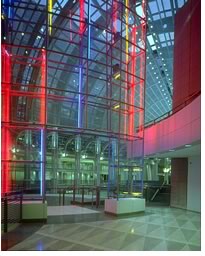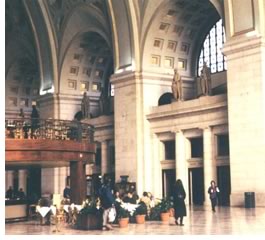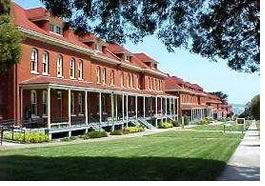
Conference examines rise of public/private enterprise in historic preservation
by Aphrodite Knoop
AIA Professional Practice editor
 Historic
preservation is not about the past; it is about the future. And, to remain
a viable element in future revitalization of our urban areas, the preservation
process must employ an innovative formula: meshing of public and private
enterprise.
Historic
preservation is not about the past; it is about the future. And, to remain
a viable element in future revitalization of our urban areas, the preservation
process must employ an innovative formula: meshing of public and private
enterprise.
Such public/private collaborations have achieved "spectacular results," said Robert D. Loversidge, FAIA, chair of the Historic Resources Committee PIA. These results formed the focus of the Public Architecture + Historic Preservation + Private Enterprise = Urban Revitalization conference March 8–10, at the AIA national headquarters in Washington, D.C., where government agency representatives, architects, preservationists, and planners gathered to discuss trends and goals for preservation and revitalization.
 It
is now "hip" to revitalize urban areas; people want to live
in the city again, according to Stephen Perry, General Services Administration
(GSA) administrator. As the biggest landlord in the country, GSA is at
the forefront of urban redevelopment. The agency is a significant holder
of historic buildings and aims to "educate people about the GSA and
help architects develop a stronger relationship with the agency,"
Perry explained.
It
is now "hip" to revitalize urban areas; people want to live
in the city again, according to Stephen Perry, General Services Administration
(GSA) administrator. As the biggest landlord in the country, GSA is at
the forefront of urban redevelopment. The agency is a significant holder
of historic buildings and aims to "educate people about the GSA and
help architects develop a stronger relationship with the agency,"
Perry explained.
GSA, however, has to be creative in stretching a very thin budget, and public/private partnerships allow the agency to achieve its goals and provide a steady income stream for restoration projects. The agency expects even more opportunities for preservation and development with President Bush's endorsement of the Freedom to Manage Act.
 Historic
easements and tax credit programs also offer incentives for private developers
to invest in urban areas. Evidence of a redevelopment boom fueled by public/private
partnerships is sprouting up from coast to coast—witness the Silver
Theater in Silver Spring, Md.; Union Station, the Old Post Office Building,
and countless other historic sites in Washington, D.C.; the Golden Gate
National Recreation Area in San Francisco; and many more.
Historic
easements and tax credit programs also offer incentives for private developers
to invest in urban areas. Evidence of a redevelopment boom fueled by public/private
partnerships is sprouting up from coast to coast—witness the Silver
Theater in Silver Spring, Md.; Union Station, the Old Post Office Building,
and countless other historic sites in Washington, D.C.; the Golden Gate
National Recreation Area in San Francisco; and many more.
According to Todd Bressi, executive editor of Places: A Forum of Environmental Design, "there is an amazing rebirth of public life. Urban life is now cool." Most downtown areas are gaining population or stabilizing, he said. "Public parks and civic spaces are not the only social spaces. Public buildings, malls, cafes, and other such spaces fill these functions."
Copyright 2002 The American Institute of Architects. All rights reserved.
![]()
|
For more lessons learned at the conference, including case studies, read the conference report online. You can access the report through the PIA Gateway or the Historic Resources Committee or Public Architects home pages on the Portal. You might want to check out the "Historic Preservation and Fire Safety" (SA29) seminar at the AIA convention, May 10, 4–5:30 p.m. For a full list of convention programs, visit www.aiaconvention.com. |
|